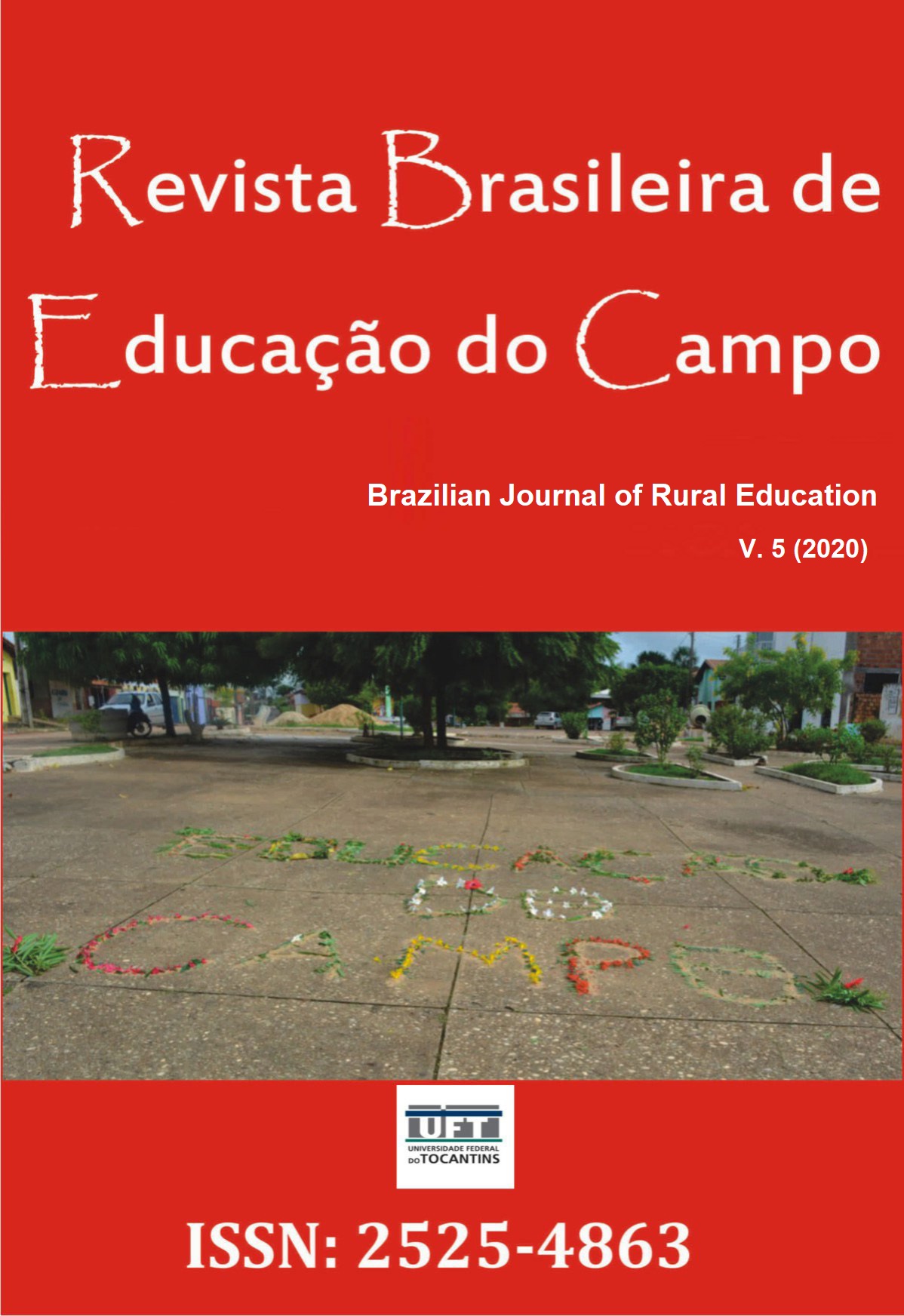Collective organization and Creole seeds: a way of struggle and resistance for the Quilombola socio-cultural identity in the Sítio Veiga community in Quixada-Ceará
DOI:
https://doi.org/10.20873/uft.rbec.e9219Schlagworte:
Creole SeedsAbstract
ABSTRACT. The cultivation of Creole seeds is part of the wisdom of the ancestral legacy, which can be told since the beginning of the agriculture history, being the traditional communities the great guardians of this cultural heritage, whose teachings transpose the preservation of their memories, since they call attention to the preservation of life itself on the planet and of the next generations, where the preservation of the genetic heritage of these seeds will guarantee the biodiversity existing on Earth. Faced with this reality, this study aims to analyze how the ways of collective organization based on the cultivation of Creole seeds contribute to the preservation of the Quilombola socio-cultural identity in the quilombo community Sítio Veiga in the city of Quixadá, in Ceará state. This research has a qualitative nature, carried out in loco, whose guiding mode was ethnographic, with participant observation, methods that are fundamental for a greater approximation and interaction with the social subjects of the research and the actions inherent to the cultivation of Creole seeds.
Downloads
Literaturhinweise
Bâ Hampâté, A. (2010). Tradição viva. In Ki-Zerbo, L. (Org.). História geral da África I: metodologia e pré-história da África (pp. 167-212). Brasília: Unesco.
Barbosa, M. M., Alenar, F. A. G., Ziegler, H. R. S., & Ziegler, S. E. S. Educação no campo e agroecologia: alternativas para o resgate das sementes crioulas. In Matos, K. S. A. L. (Org.). Educação ambiental e sustentabilidade IV (pp. 374-387). Fortaleza: UFC.
Brasil (1988). Constituição de 1988. Constituição da República Federativa do Brasil. Diário Oficial [da] República Federativa do Brasil, Poder Executivo, Brasília, DF, 5 out.
Brasil (2012). Resolução nº 466, de 12 de dezembro de 2012. Diretrizes e normas regulamentadoras de pesquisas em seres humanos. Diário Oficial [da] República Federativa do Brasil, Poder Executivo, Brasília, DF, 13 dez.
Carvalho, H. M. (2003). (Org.). Sementes, patrimônio do povo a serviço da humanidade. São Paulo: Expressão Popular.
Cunha, F. I., Silva, A. M. E., & Vasconcelos, J. G. (2019). Casa de sementes Pai Xigano: um olhar para os saberes ancestrais do cultivo de sementes crioulas no quilombo Sítio Veiga, Quixadá-CE. Revista Cocar, 13(27), 903-923.
Diário do Nordeste (2017). Quilombos: resistência para vencer invisibilidade histórica. 20 nov. Recuperado de: https://diariodonordeste.verdesmares.com.br/editorias/metro/quilombos-resistencia-para-vencer-invisibilidade-historica-1.1853301.
Diegues, A. C. S., Arruda, R. S. V., Silva, V. C. F., Figols, F. A. B., & Andrade, D. (1999). Saber tradicional, ciência e biodiversidade. In Diegues, A. C. S. (Org.). Biodiversidade e comunidades tradicionais no Brasil (pp. 30-35). São Paulo: USP.
Domingos, L. T. (2011). A visão africana em relação à natureza. Revista Brasileira de História das Religiões, 3(9), 3-9.
Figueiredo, G. P., Barbosa, M. M., & Pinheiro, R. S. (2013). Agroecologia integrada à educação ambiental: ferramentas para uma melhor convivência da população com o semiárido. In Matos, K. S. A. L. (Org.). Educação ambiental e sustentabilidade IV (pp. 360-373). Fortaleza: UFC.
Leite, I. B. (2000). Os quilombos no Brasil: questões conceituais e normativas. Florianópolis, 4, 333-354.
López, G. L. (1999). O método etnográfico como um paradigma científico e sua aplicação na pesquisa. Textura, 1(2), 45-50.
Minayo, M. C. S. (2002). O desafio do conhecimento: pesquisa qualitativa em saúde. São Paulo: Hucitec.
Monteiro, K. S., & Garcia, M. F. (2010). Territorialização quilombola: o caso da comunidade negra de Gurugi, Paraíba. Revista Pegada, 11(2), 148-170.
Monteiro, S. (2004). Desigualdade em saúde, raça e etnicidade: questões e desafios. In Monteiro, S., & Sansone, O. (Org.). Etnicidade na América Latina: um debate sobre raça, saúde e direitos reprodutivos (pp. p. 45-56). Rio de Janeiro: Fiocruz.
Munanga, K. (1996). Origem e histórico do quilombo na África. Revista USP, (28), 56-63.
Revista Carta Capital (2019). Manifesto. Recuperado de: https://www.cartacapital.com.br/politica/bolsonaro-libera-queimadas-para-agronegocio-fora-da-amazonia/.
Silva, S. R., & Nascimento, L. K. (2012). Negros e territórios quilombolas no Brasil. Cadernos Cedem, 3(1), 23-37.
Souza, L. B., & Chaveiro, E. F. (2019). Território, ambiente e modos de vida: conflitos entre o agronegócio e a comunidade quilombola de Morro de São João, Tocantins. Sociedade & Natureza, 31, 1-25.
Trindade, C. C. (2006). Sementes crioulas e transgênicos, uma reflexão sobre sua relação com as comunidades tradicionais. In Anais do Congresso Nacional do Conpedi (pp. 1-15), Manaus, AM.
Veröffentlicht
Zitationsvorschlag
Ausgabe
Rubrik
Lizenz
Creative Commons Attribution License
Creative Commons Attribution License
Proposal for Copyright Notice Creative Commons
1. Policy Proposal to Open Access Journals
Authors who publish with this journal agree to the following terms:
A. Authors retain copyright and grant the journal right of first publication with the work simultaneously licensed under the Creative Commons Attribution License that allows sharing the work with recognition of its initial publication in this journal.
B. Authors are able to take on additional contracts separately, non-exclusive distribution of the version of the paper published in this journal (ex .: publish in institutional repository or as a book), with an acknowledgment of its initial publication in this journal.
C. Authors are permitted and encouraged to post their work online (eg .: in institutional repositories or on their website) at any point before or during the editorial process, as it can lead to productive exchanges, as well as increase the impact and the citation of published work (See the Effect of Open Access).














